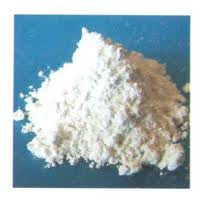Talc - Magnesium Silicate Hydrate
Technical Grade
Talc is a refined hydrated magnesium silicate which is an off-white powder. It is a common metamorphic mineral found naturally throughout the world. Talc is the softest mineral on the planet and is a tri-octahedral layered mineral with a similar structure to pyrophyllite but with magnesium in the octahedral sites of the composite layers. It is relatively inert and is virtually insoluble in water, weak acids and weak bases. Although it has very little chemical reactivity, talc does have an affinity for certain organic chemicals. Above 900C, talc loses its hydroxyl groups and above 1050C, it converts into anhydrous magnesium silicate. Above 1300C it melts. Talc is used in many industries such as paper making, plastic, paint and coatings, rubber, electric cable, ceramics, etc.
PLEASE NOTE: This product is not for human or animal consumption.
USES FOR TALC
Talc has many applications in industry as it offers the following functions: lubricant, filler, electric and heat insulator, anti stick, anti cake, carrier, thickener, adsorbent, strengthener and an extender. Its key characteristics are its softness, chemical inertness, affinity for organic chemicals and whiteness.
Talc in the ceramics industry
A material used in all types of glazes to produce typical magnesium effects i.e. in large quantities, opacity and vellum texture. Having low expansion and contraction it can cure crazing. Talc is also used to introduce magnesium and silica into bodies, particularly those fired at low temperatures, acting as a flux. It is used in the manufacture of floor and wall tiles and sanitaryware, tableware, and technical ceramics
However, it reduces plasticity, and is more suitable for castware, tiles and where whiteness is important. Low expansion makes it an appropriate ingredient of flameproof bodies. It is also employed as a matting agent in earthenware glazes and can be used to produce magnesia mattes at high temperatures.
Talc in the Paint industry
In the paint industry talc is used in the production of decorative paints, industrial coatings, inks, pigments, primers, enamels, adhesives and putties. Due to its natural properties talc improves fluidity and coverage properties of paint making it easier to apply and improving cracking resistance, imparts corrosion, acid, thermal, air resistance to them, increase smoothness and stability of paint products.
Talc in the paper industry
Talc is used in both uncoated and coated rotogravure papers where it improves printability as well as reducing surface friction, giving substantial improvements in productivity at the paper mill and print house. Talc is used in three stages of paper making - as a filler, to control pitch and stickies and in paper coating. During the paper making process, the micro impurities can clog the paper machinery. Talc being hydrophobic absorbs these micro droplets thus controlling their stickiness and avoiding clogging. High brightness of talc leads to reduction in usage of expensive whitening agents and helps in controlling gloss of the coat. Talc gives smoothness, yellow index, porosity, opacity to paper, improves its yellow index and reduces the deterioration of the machinery.
Talc in the plastics industry
Talc is used in the automotive, plastic and electrical appliance industries in the manufacture of bumpers, dashboards, interior trims, computer and TV bodies, white goods, garden furniture etc. It is used in polypropylene, polyamides, cable PVCs and other plastic compounds. Talc is being increasingly used in HDPE, PP, LDPE, PVC, ABS & thermosetting compounds. It is excellent filler due to blending characteristics and thermal and electrical resistant. It provides the smooth feel to plastic surface. Due to its chemical inertness, superior electrical and thermal resistance and other properties talc imparts stiffness, hardness, tensile strength of plastic products, improves quality of their surfaces, gives them electrical, chemical and thermal resistance
Talc in the rubber industry
Talc reduces the viscosity of rubber compounds, thereby facilitating the processing of moulded parts. It also improves extrudate qualities, increasing production rates and enhancing UV radiation resistance of exterior parts such as automotive profiles. In sealants and gaskets, they provide good compression resistance, and they create a barrier against liquids. In cables, talc functions as insulators and in tire manufacture it makes excellent processing aids.
Talc in wastewater treatment
Specialty talc can improve the performance of biological wastewater treatment plants. The talc particles ballast the flocs of bacteria and accelerate their sedimentation. The addition of talc results in top quality discharge and zero bacterial loss. It can help to upgrade plants without resorting to costly plant expansions. As opposed to most chemicals used to clean wastewater, such as chlorine or aluminium salts, talc is a natural, environmentally-friendly mineral additive. And because it is inert, it preserves the fertilizing value of sewage sludge.
Properties and specification of Talc
- Synonyms: Soapstone; steatite; talcum; Talc, magnesium silicate;
- CAS number: 14807-96-6
- EINECS: 238-877-9
- Purity:
- Appearance: white translucent
- Formula: Mg3Si4O10(OH)2
- Molecular weight: 379.26
- MgO content: 31.80%
- SiO content: 60.0%
- Average particle size (d50): 12.0 microns
- Sieve residue (45 micron mesh): >98% passing
- Surface area: 4.3m2/g
- Mohs hardness: 1.0
- pH: 8.4-9.4
- Bulk Density (loose): 0.81 g/mol
- Specific gravity: 2.75 g/cm3
- Solubility in water: insoluble
- Melting point: >1300C
- Refractive index: 1.59
- Oil Absorption: 37g/100g
Health & Safety
Not considered an acute health risk. Avoid excessive dust generation. May cause mechanical eye and skin irritation. Avoid breathing dust. Prolonged inhalation may cause lung injury. Physical form is unlikely to present dust risk under normal conditions of use. Product can become slippery when wet.
